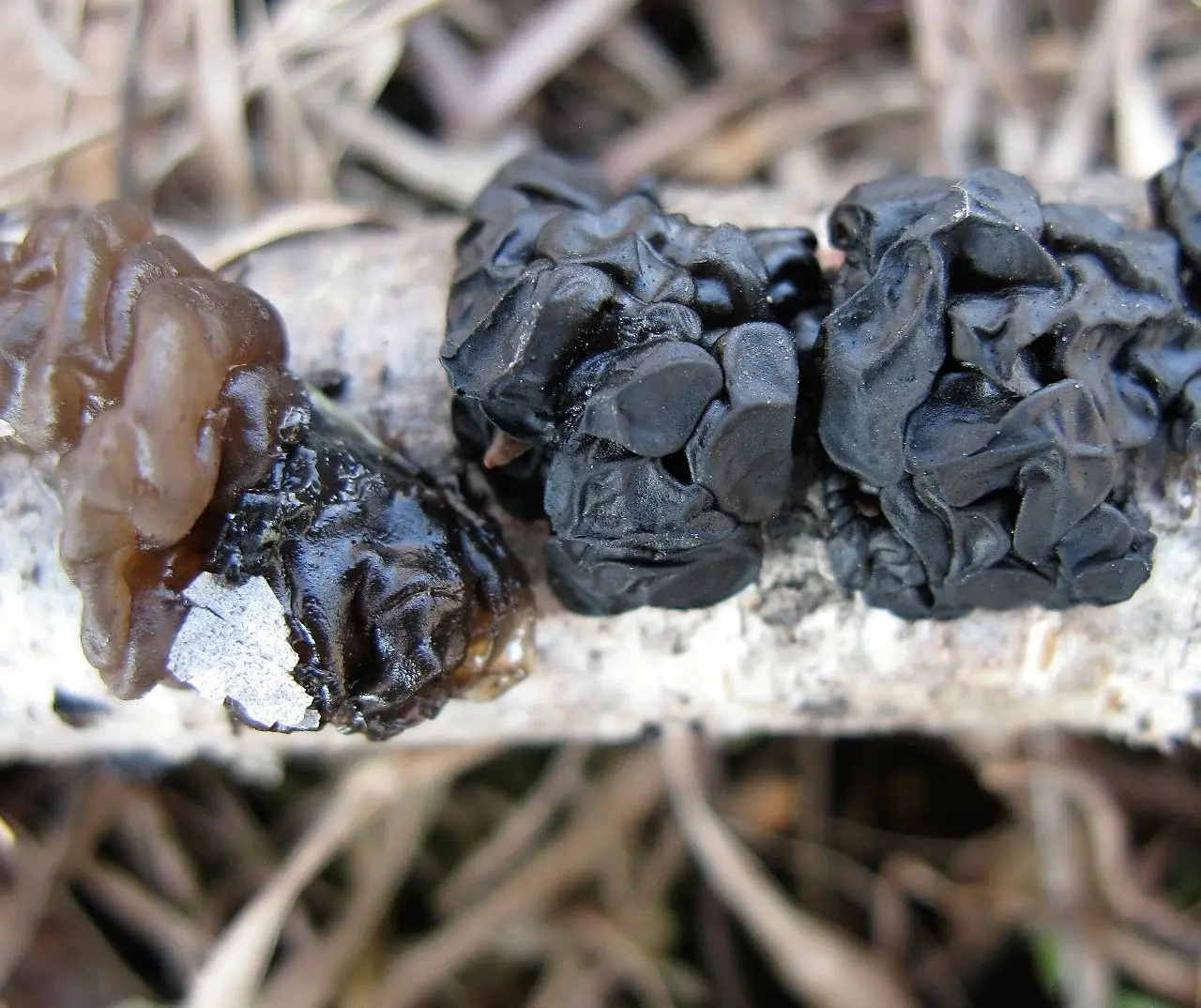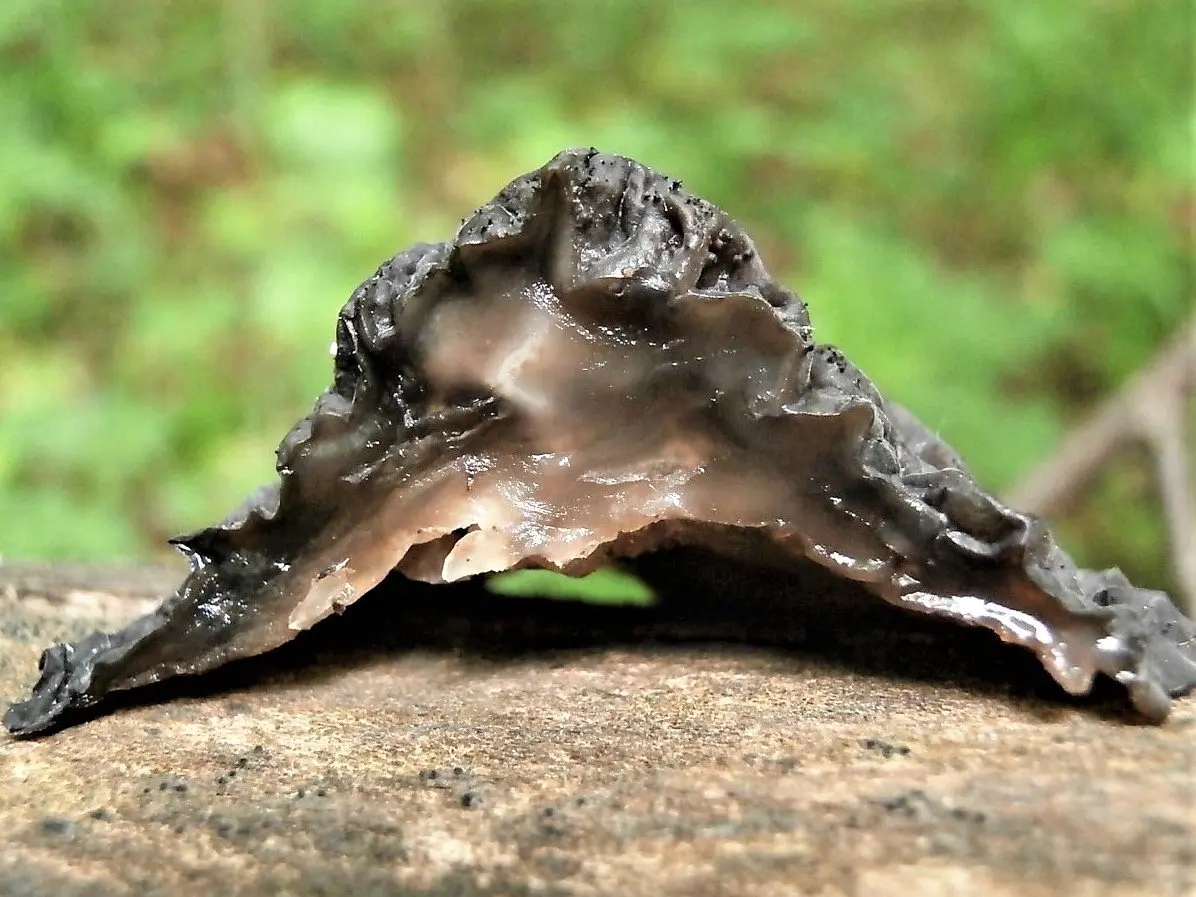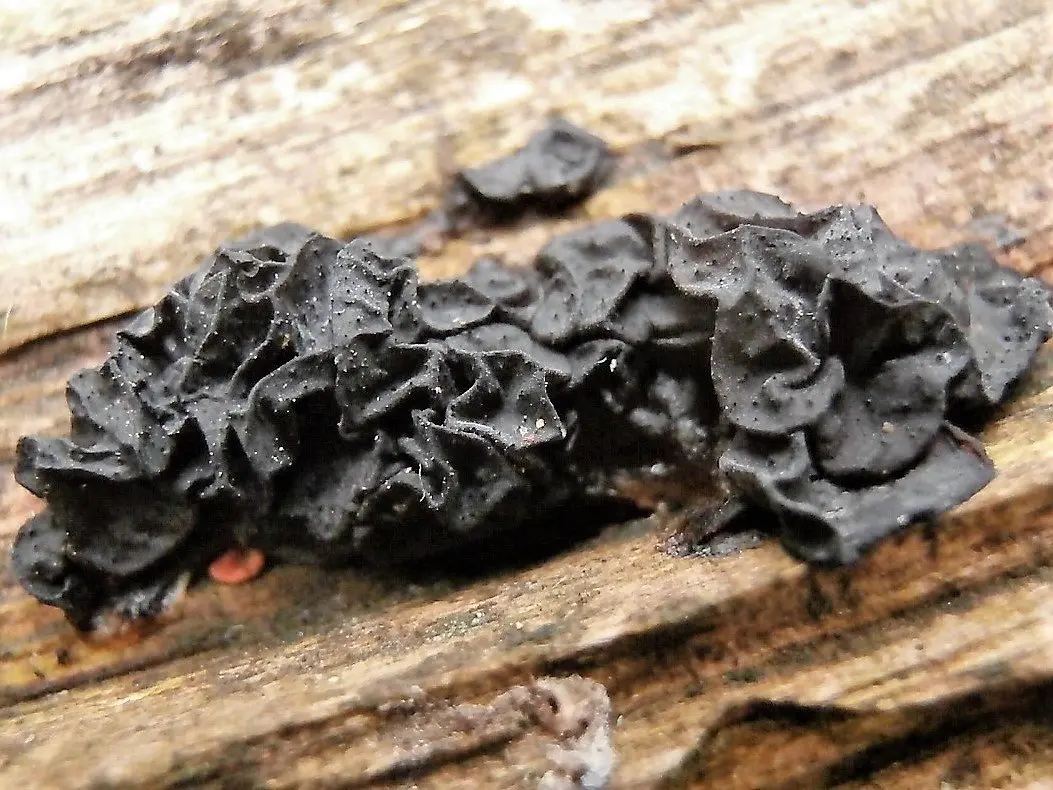Blackening Exsidia (Exidia nigricans)
- Division: Basidiomycota (Basidiomycetes)
- Subdivision: Agaricomycotina (Agaricomycetes)
- Class: Agaricomycetes (Agaricomycetes)
- Subclass: Auriculariomycetidae
- Order: Auriculariales (Auriculariales)
- Family: Exidiaceae (Exidiaceae)
- Genus: Exidia (Exidia)
- Type: Exidia nigricans (Blackening Exidia)
flat top

Exidia nigricans (With.)
Fruit body: 1-3 cm in diameter, black or black-brown, at first rounded, then the fruiting bodies merge into one tuberculate brain-like mass, extending up to 20 cm, adhering to the substrate. The surface is shiny, smooth or wavy-wrinkled, covered with small dots. When dried, they become hard and turn into a black crust covering the substrate. After rains, they can swell again.
Pulp: dark, transparent, gelatinous.
spore powder: white.
Споры elongated 12-16 x 4-5,5 microns.
Taste: insignificant.
Smell: neutral.

The mushroom is inedible, but not poisonous.
It grows on fallen and dried branches of deciduous and broad-leaved trees, sometimes covering a large area.
Widely distributed throughout the northern hemisphere, including throughout Our Country.
Appears in spring in April-May and, under favorable conditions, grows until late autumn.

Exidia spruce (Exidia pithya) – grows on conifers, fruiting bodies are smooth. Some mycologists believe that spruce exsidia and blackening exsidia are the same species.
Exidia glandular (Exidia glandulosa) – grows only on broad-leaved species (oak, beech, hazel). Fruiting bodies never merge into a common mass. Spores in glandular exsidia are slightly larger.









